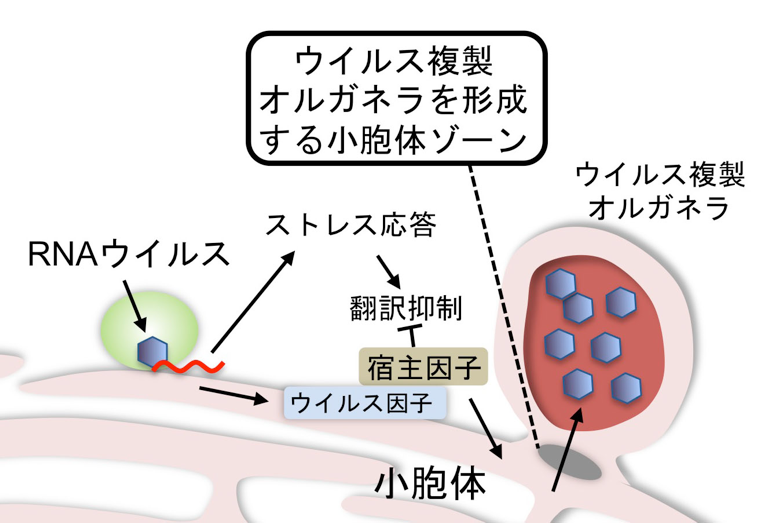A01-2

Molecular mechanisms of the formation of viral replication organelle from ‘ER response zone’.
Research abstract
Many pathogens persistently infect host cells and dramatically rearrange the intracellular membranes to produce unusual organelle-like structures called ‘replication organelle’. In positive-strand RNA virus infected cells, the membrane structures appear near the endoplasmic reticulum. Therefore, it can be said that these structures are generated from the ‘ER response zone’. These structures likely serve as a scaffold for the assembly of the replication machinery by providing an environment facilitating viral propagation. These structures are also known to serve as shells that protect the viruses against various cellular stress responses and allow persistent viral replication in the cytoplasm. In this process, the replication organelle creates a ‘communication zone’ with the surrounding mitochondria that possess sensors and mediate innate immune receptor signaling. In this study, our group will focus on the molecular mechanism of the formation of the ‘ER response zone’ and the ‘replication organelle-mitochondria communication zone’ by identifying the dynamic state of viral and/or host factors during the viral propagation cycle.
Original papers
- Tabata, K., Arimoto, M., Arakawa, M., Nara, A., Saito, K., Omori, H., Arai, A., Ishikawa, T., Konishi, E., Suzuki, R., Matsuura, Y., and Morita, E. (2016) Unique Requirement for ESCRT Factors in Flavivirus Particle Formation on the Endoplasmic Reticulum. Cell Reports 16, 2339-2347
- Fujita, N.†, Morita, E. †, Itoh, T., Tanaka, A., Nakaoka, M., Osada, Y., Umemoto, T., Saitoh, T., Nakatogawa, H., Kobayashi, S., Haraguchi, T., Guan, J.L., Iwai, K., Tokunaga, F., Saito, K., Ishibashi, K., Akira, S., Fukuda, M., Noda, T., Yoshimori, T. (2013) Recruitment of the autophagic machinery to endosomes during infection is mediated by ubiquitin. J Cell Biol 203, 115-128 †These authors contributed equally
- Morita, E., Sandrin, V., McCullough, J., Katsuyama, A., Hamilton, IB., Sundquist, WI. (2011) ESCRT-III protein requirements for HIV-1 budding. Cell Host Microbe 3, 235-242
- Morita, E., Colf, LA., Karren, MA., Sandrin, V., Rodesch, CK., Sundquist, WI. (2010) Human ESCRT-III and VPS4 proteins are required for centrosome and spindle maintenance. Proc Natl Acad Sci U S A 107, 12889-12894
- Morita, E., Sandrin, V., Chung, HY., Morham, SG., Gygi, SP., Rodesch, CK. and Sundquist,, WI. (2007) Human ESCRT and ALIX Proteins Interact with Proteins of the Midbody and Function in Cytokinesis. EMBO J 26, 4215-4227
Reviews
- Morita, E. (2012) Differential requirements of mammalian ESCRTs in multivesicular body formation, virus budding and cell division. FEBS J 279, 1399-1406
- Morita, E., Yoshimori, T. (2012) Membrane recruitment of autophagy proteins in selective autophagy. Hepatol Res 42, 435-441
- Morita, E., Sundquist, WI. (2004) Retrovirus budding. Annu Rev Cell Dev Biol 20, 395-425



